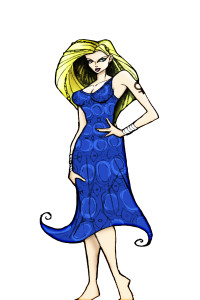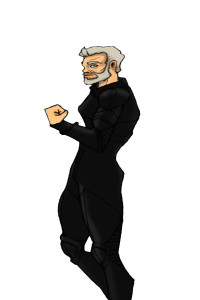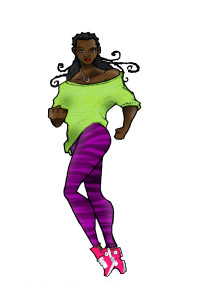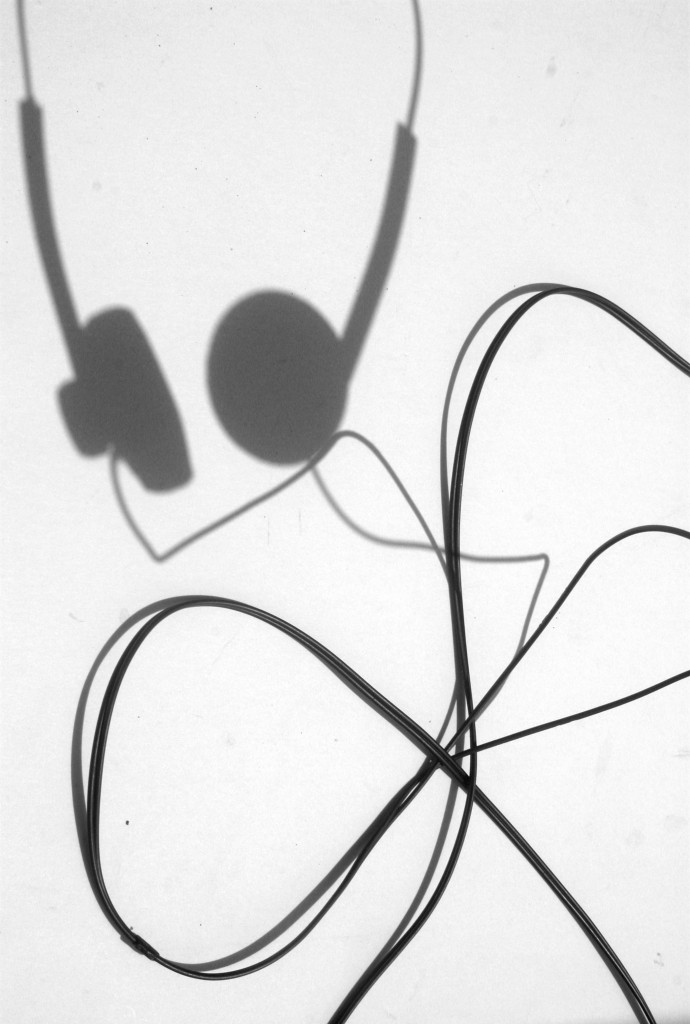In which I muse and ruminate on what I write about, or what I try to write about, or maybe what I think I write about…
Tag Archives: Inspiration
Cairns Writes 2017 – Video Thirteen – What inspires you?
In which I ramble, for the most part, about the things that inspire me to create…
The Work-in-Progress Blog Tour
I was invited to participate in this tour by my wonderful friend and fabulous fantasy author, Autumn M Birt. To see her post, go here.
The aim of this post is for me to reveal a little something about my current work in progress and to share some of the thinking and inspiration behind it. After, I’ll nominate some other writers to share their progress. So without further ado…
The Planets: Book Five – The Enemy Within.
Since writing the first four books in my Planets Superhero series, I’ve written about fifteen other novels, of various lengths and genres. I didn’t think I’d return to the Planets, having not found anything that moved me enough to go there. However, in editing the third and fourth book in the series, I found myself falling in love with the characters all over again and realising where the story needed to go next. I also wanted to have another crack at writing a Planets story with all the new knowledge and skills I’ve gained from writing those extra books in between.
I can’t give away too much without giving out huge spoilers for book 3, The Long Way Home, which is out in about a month and book 4, Someone Else’s Statue, out in Spring. However, I can talk about the process and some of the obstacles I’ve come up against.
The Enemy Within begins three months after the end of Book 3 and the world is in a very different shape to how it ended up. The Planets are struggling, in some cases, to find where they fit within this new world. Others have too much on their plates as it is. Of course, things wouldn’t be fun if an old friend didn’t turn up to screw things over royally. This turns out to be the tip of the iceberg and soon all hell breaks out.
In writing The Enemy Within, I wanted to write something that felt truly global. I’ve always enjoyed the Planets books for taking me all over the world and in some cases, beyond. But I’ve also always been careful to keep the Planets themselves under the radar. Much of their strength comes from being covert. In this book, I’ve changed all that. Nothing can stay a secret forever and the issues that come with being a public superhero are numerous and lots of fun to explore. Needless to say, my characters disagree with me. 🙂
I also wanted to explore the fallout from what occurred in the first three books. So often in fantasy books, the war is over and all’s well that ends well. In The Long Way Home, the war ends but little is well. Seeing the characters three months on and dealing with the repercussions of that is endlessly exciting and great fun to write.
Finally, as I mentioned earlier, I wanted to push myself to use some of the skills I think I’ve picked up over the last year and a half. This book is tough to write because it has a cast of thousands, obviously, but it also has nine POVs. All of the Planets get a look in, and trying to keep track of everyone’s personal journey, as well as how all the events tie in is a real challenge. The best thing for me to do would be to create some kind of table or wall chart, to map everything out. However, time spent doing that is time I could be writing, so instead I keep it all in my head.
I’ve not been sleeping well lately. 🙂
But it’s fun. And I find having everything in my head keeps it moving around. This means that when a new plot twist rears its ugly head, I can just slot it in without worrying about previous plans. I began The Enemy Within thinking of it as book five in the series, but it is rapidly becoming books five and six. This suits me just fine, but has thrown up another conundrum. I have the final scene in my head, as I often do by this stage, but if that scene doesn’t arrive until the end of book six, how do I make book five end in a way that is satisfying and meets the needs of the readers without tying everything up too neatly?
These are the sorts of challenges I find when I’m writing. Fortunately, they make everything more fun, so I really can’t complain. If you like the sound of the Planets, you can find them on all the normal platforms. The links can be found on the homepage, which you can reach by clicking here or the banner above.
I would now like to nominate the following lovely people to take on the challenge.
Ace, serial romance blogger.
Spinner of tales both sexy and scary.
I chose Tamie and Karen because they, like me, write fiction on their blogs, which I think is ace and would like to see more of.
6 fantasy writing prompts for magic scenes
Source: weareallstarstuff.tumblr.com via Michael on Pinterest
For this week’s post, we’re going to look at another classic of the Fantasy genre, spell-casting. Writing spell-casting is one of the most fun things you can do on your own, up there with angry birds and watching Machete on repeat.
Below are five scenarios. Your job is to create a scene that evokes a sense of wonder and well, magic, yet grounds the events in some form of reality. So in other words, try to think outside the box of what you’ve read or seen previously without throwing the reader out of the scene.
- Different worlds:
This is taken directly from one of my novels, and was lots of fun to write. The characters are; an old hand bad guy and a newbie good guy. The battle had already begun and things have been thrown, fire cast and what-have-you. To up the ante, the bad guy creates a series of scenarios in which to trap the newbie, miniature worlds where brand new terrors and dangers can be inflicted. Take up the fight just as the newbie is thrown into a new world. The challenge is to describe the setting without losing the pace or sight of the end goal.
- The fireball classic:
Two wizened and grumpy old sods are going at one another, possibly over some slight made many moons ago about a hat, or staff, or both. The reason matters not at all. What does matter is that both of the old dudes have got serious game and an unpleasant fascination with fire. I’m imagining this as a slow, old-style scene, with plenty of description and focus on the moment. Perhaps tell it from the point of view of an observer, or from the miserable mind of one of the combatants. There could be some comedy one-upmanship going on as well.
- Weather magic:
Controlling the elements must be one of the coolest things, like, ever. In this scene, the Islanders, wedded to the sea are invading the mainland. They bring with them their greatest priest, a master of the sky and storm. Facing him on the shore is the Lord’s mage, a wielder of fearsome earth magic. Before the physical battle is joined these two will fight for supremacy of the mind. Create this part of the scene, before the swords come out. I’m thinking lightning, quakes, elementals, you name it.
- The Charm part one:
Something Harry Potter does well is the charm, the creation of something new outside himself that buggers about and causes mischief. This scene may be less about having a fight and more to do with solving a problem, or learning something. The main aim is to set up a magical device, or charm, that then interacts with those around it. Good places to start are animals, or fictional creatures. Using the charm conceit you can create something that has no right to physically exist, so no rules!
- The Charm part two – illusion:
This is similar to the one above. The main difference is that whatever is created is only illusion, something made to cause fear or confusion perhaps. Equally, it may be used to sneak someone in somewhere, or convince someone or something of something tricksy.
- Total Destruction:
I’m thinking Milamber at the games in Magician. You have at your disposal one seriously powerful and pissed-off magician, intent on ruining a whole bunch of peoples’ days. Why? Because he can. What’s the most inventive way you can think of to destroy a city using magic?
Please post your comments below and enjoy!
Inspired by places, todays destination – Soho, London
I find myself inspired by many things; people; places; images; music, really anything I come across. Whilst most of what I write comes from the voices in my head; the initial spark, or trigger to an idea is normally external. I find travelling, and seeing new, and indeed old, places particularly inspiring.
My wife and I often play a game when we’re driving somewhere, getting one another to create bizarre scenarios or stories based upon what we can see. We do this for people as well, inventing stories for the random folk we pass walking through town.
I thought this week I would take you on a mini tour to some of the places I have found the most inspiring…
Soho, London. There are a hundred places in London I could talk about. I love this town and everything about it, and find and have found endless inspiration in many parts of it. I’ve chosen Soho because it’s my favourite place to go and hang out, soaking up the atmosphere and letting the ideas flow.
Source: Uploaded by user via Maria on Pinterest
There are endless back streets, ripe for a murder, or random opening of a portal. There are buildings steeped in history, inviting thoughts of dimly-lit gatherings of ages old vampires or dusty magic users. And of course, there are the people. A thousand, thousand stories, all clamouring and jostling to be told, to escape the street and break free of my imagination and into print.
The smell, the noise, the very air enriches and enlivens the dreaming part of me.
Soundtrack your novel – a 2 part guide to using music in writing
Try to imagine the beginning of Trainspotting (the film) without ‘Lust for Life’ banging out of the speakers. Try to imagine the first half of Wall-E without any music. Try to imagine any Harry Potter movie without that really annoying ‘dee dee, deedeedee, dee dee’, and so on, you get the idea.
In movies, good ones at least, the music is integral to the emotion. With film scores, the music will often tell you exactly what’s going on, adding to and emphasizing what the director is trying to get across. With soundtracks, the songs will do a similar job. With truly brilliant sound-tracking, the music will add another layer above what the characters and dialogue and setting are already doing.
This post will be in two parts. The first is for when you are writing your WIP, the second for after, when you are collecting original music to transform it into a fabulous multi-media release.
So, Part 1: Before we write.
We’re going to start with your characters. Imagine each one making his or her entrance. Trawl your record collection until you find the song that creates just the right impact. When exploring your collection, it may be that you find a song that changes how you see the character, which can be for the good, or you may hear something that makes you grin every time you picture your hero. Keep searching until you find a piece that really helps you develop that character.
In short, give your characters a theme. You may find that what fits them when they are being classy and cool, is entirely wrong when they are sobbing and coughing up snot, so more than one piece might be appropriate. What it will do is add another layer to your vision of them, making them that bit richer on the page and hopefully enhance your writing experience.
Now to the scenes. I often only have a couple of scenes in my head before I begin writing, so I’ll do this at various points throughout the process. A classic technique used by some movie directors is storyboarding, blocking out each part of the scene in varying degrees of detail before they begin. You can do this with music.
Ask yourself, how does your scene begin? Is it mysterious, or action filled, is it a slow build, a gradual reveal, or is the reader going to be thrown in the deep end? The right music can give you the momentum or rhythm to get those opening beats bang on. Sometimes, it can be useful to use a cue from a movie you know well. You might have pictured your scene and want a particular feel reminiscent of something you’ve seen. If so, find that music and put it on, get into the atmosphere.
You can also decide whether you will have just one piece of music, or whether you want to have many, moving the scene forward through changes in mood and tempo.
The aim of this is to add that extra something to your writing experience, which will hopefully translate to the page. You may of course think that the soundtrack has so much impact that you want to share it with your readers. As ebooks get better and better, it will become easier to include music with a book, which opens up a whole new realm of possibilities.
This brings us to part 2: After we’ve written.
Let’s look at choosing music for a multi-media book release. I’m going to focus on the specifics of music, picking apart the basics to give you the tools to trawl music libraries and find what you need without too much frustration and heartbreak.
There are a few fundamental musical elements that can help you to choose, or at least search in the right area, for the right kind of music. I’ve included examples for each tempo band. These are taken from films, which feels like the best point of reference at the moment. Hopefully, if I re-write this in 10 years time, I can use examples from books!
Tempo: The speed of the music. Almost all music libraries will have their tracks listed by tempo. Here are the basic tempo markings with genre and outlines:
60 – 90 bpm: This is pretty slow, a good setting for ballads and some rock. Also, a lot of hip hop works at this speed
Examples: Gangsters Paradise by Coolio (80bpm), from Dangerous Minds.
Uninvited by Alanis Morissette (63bpm) from City of Angels.
90 – 120 bpm: This is a little more upbeat. Most rock and Americana fit in here, along with classic pop.
Examples: Kiss me by Sixpence None the Richer (100bpm) from She’s all That (sorry about the movie)!
Axel F by Harold Faltermeyer (115bpm) the theme from Beverly Hills Cop
120 – 150 bpm: This is now dance, upbeat rock and modern pop stuff, excellent for action scenes.
Examples: Spybreak by Propellerheads (127bpm) from the lobby scene in The Matrix
Power of Love by Huey Lewis (120bpm) from Back to the Future
Canned Heat by Jamiroquai (130bpm) from Napolean Dynamite
150 bpm and up: This is fast stuff, drum and bass, punk and some 80s pop. Although it can be very fast, it is often used in movies as it works well with quick edits, something you may want to duplicate on paper.
Examples: Lust for Life by Iggy Pop (200bpm) from Trainspotting.
Footloose by Kenny Loggins (173bpm) from, well duh.
Timbre: The choice of instrument determines the timbre and it is the individual qualities of each instrument that create the timbre of the whole piece. Some may describe it as the colour and feel of the sound. Some storytellers use them to great effect and it’s worth thinking about as it’s another way to refine your searches.
Cello: Crouching Tiger Hidden Dragon was smothered in the wonderful cello styling of YoYo Ma, and created an atmosphere perfectly in keeping with sense of duty and tradition and doomed romance that permeate the movie.
Drums: The Lion King, amongst many others, uses the sound of drums to great effect, creating an aural backdrop to accompany the stunning scenes of the African savannah. Avatar also uses tribal-style drumming at key points to support certain environments.
Synthesiser: Blade Runner is the classic example of how to use synths well. The sounds are deliberately alien and were very unusual at the time. Although far more common these days, there are still so many synthesized timbres that haven’t been explored and could be incredibly evocative.
Strings: From the haunting Adagio for Strings from Platoon to the entire soundtrack from Lord of the Rings, a strong string section can do pretty much anything.
Voice: Used to great effect in everything from ‘Oh brother where are thou?’ To ‘Sister Act’, both solo voice and choirs are in many ways the most powerful of all instruments when used right. The accent, the style, everything about how someone sings will give your reader a more complete experience.
Orchestra, acoustic guitar, trumpet, there are so many choices and each one will impact on the experience your reader has.
Tonality: this is the key of the piece, which means very little if you haven’t studied music, so to put it better, if a little simply, the tonality will inform the listener whether a piece is happy or sad, joyous or melancholy.
Major: this pretty much means happy, positive and everything’s ok. That isn’t to say that a major piece won’t have moments of sadness within it, but that’s the general gist. Major songs from above: Kiss Me, Axel F (the latter being a great example of a song in a major key that doesn’t sound all that happy! It’s to do with starting on the sixth note of the scale, but that’s a whole different post)
Minor: Rather predictably, this means sad, or lonely, or haunting.
Modal: This is where it gets a bit tricky, but this can be for those in-between moments, where the listener has to make up his or her own mind. Modal music can be what’s called ‘tonally ambiguous’, not giving too much away.
Atonal: This is for the crazy moments, where you just want to scare people.
Time Signature: this is, again quite simply, the number of beats you feel in a piece, when you tap your foot to it.
4/4: by far the most common, every song in the tempo section is in this time signature. Tap your foot to each one and count 1, 2, 3, 4 and all should become clear.
3/4 and 6/8: For use when people are waltzing, or being generally romantic.
2/4: Marches, military goings-on and the like. Also good for a hoedown.
5/8, 7/8 and 15/16: For those crazy times again.
These are a bit simple, so apologies if you are a musician, please don’t shoot me, it’s about making it useful.
That’s the basics covered. Now you have your book written and you’ve used some classic songs to help you. The next step, go to the library and for that scene you wrote whilst listening to Moonlight Sonata on repeat, type in ‘60 bpm/Piano/minor/4/4/classical’ and you should be on the right track. Not that you’ll find anything quite as good as that, so maybe just use the original. Ho hum.
To finish, my personal favourite of all soundtracks is the scene in Goodfellas where the bodies are begin discovered, in garbage trucks, abattoirs and so on. Playing in the background is the unlikely choice of the wonderful outro from Layla by Eric Clapton. I’m not a huge fan of the rest of the song and you might not even recognize the two parts as being from the same piece of music, but the piano-led end section is beautiful and entirely at odds with the horror on the screen. And you know what, it really works.







